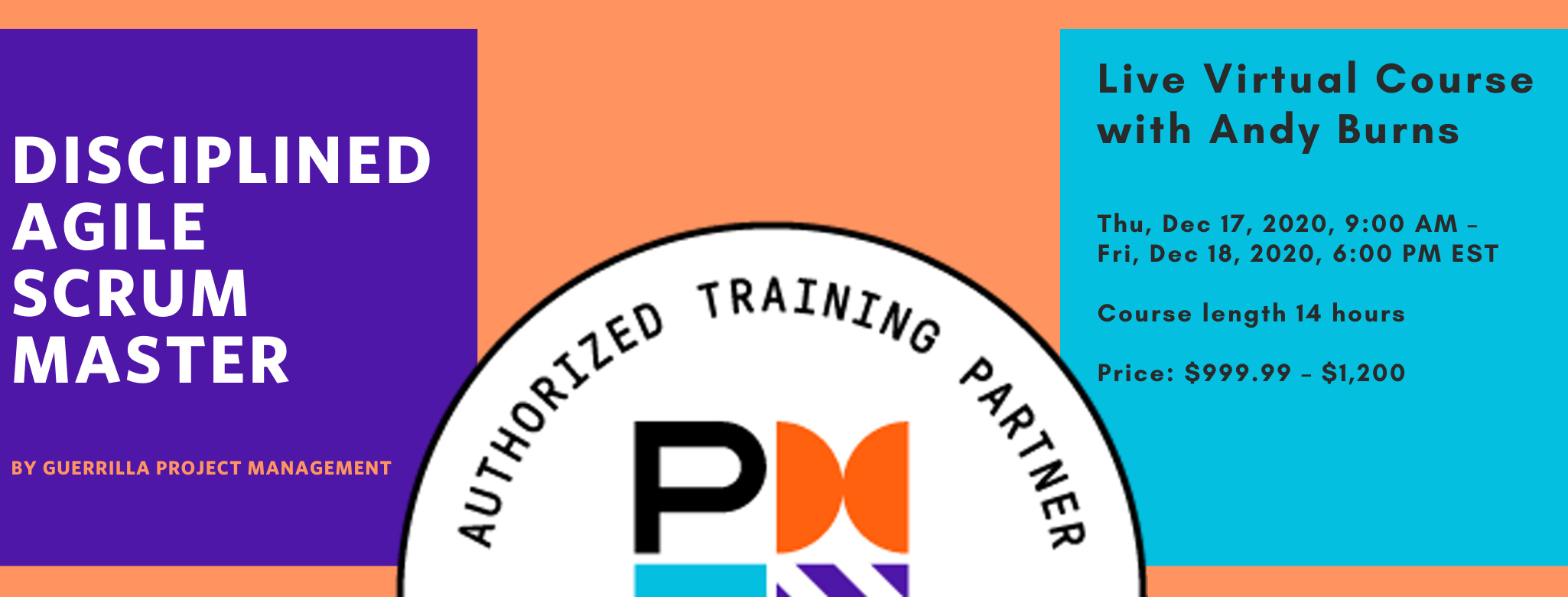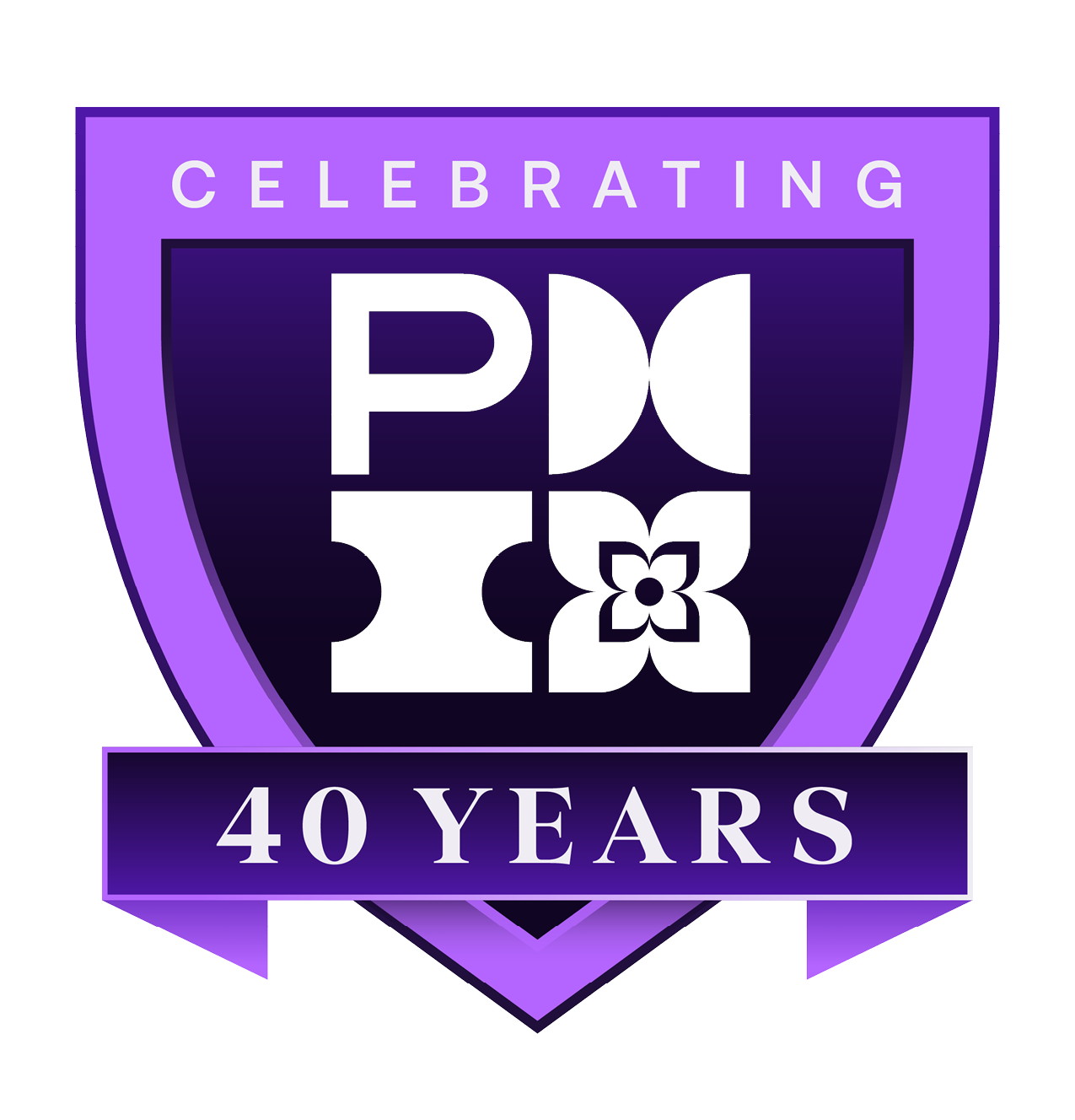Disciplined Agile Scrum Master (DASM) Course

Disciplined Agile Scrum Master
- Course length 14 hours ( 7 Leadership PDUs + 7 Technical PDUs)
- Prerequisites No experience needed
- PMI Roc Members 50% OFF Code: see your email
Guaranteed to Run, Live Virtual
PMI Info Link: DASM
Instructor
Andy Burns PMP, PMI-ACP, CDAI, DAC, SPC is also a full time Scaled Lean Agile practitioner involved in product development at one of the top ten software engineering companies. Working at Siemens Digital Industries Andy supports more than 130 Scrum Teams building Teamcenter and Active Workspace, the world's number one Product Lifecycle Management Software. As a practitioner Andy uses what he teaches every day. Benefit from his experiences learning about road tested tools, techniques, and frameworks.
Learning Objectives
Describe the significance of the Disciplined Agile Mindset
- Describe what Disciplined Agile is
- Define the principles of DA
- Describe the promises of DA
- Describe the guidelines of DA
- Describe how DA is an agnostic hybrid of approaches that leverages strategies from a variety of sources.
Describe what business agility is and how it is core to value proposition of Disciplined Agile
- Define business agility
- Identify the full range of business agility
Define the eight DA principles and how they are core to what sets Disciplined Agile apart from other agile frameworks Page
- Recognize the importance of making Delight Customers a priority
- Describe how Being Awesome is important for building a great agile team
- List the 5 levels of awareness (Enterprise Awareness)
- Identify how different contexts require different strategies – teams need to be able to own their own process and to experiment to discover what works in practice for them given the situation that they face. (Choice is Good)
- Identify how DA provides guardrails helping you to make better process choices, not strict rules that may not even be applicable given the context that you face. (Pragmatism Over Purism)
- Identify the potential factors to consider regarding the context of a given situation faced by a team. (Context Counts)
- Identify that the large number of strategies the DA toolkit supports to Optimize Flow.
- Explain the importance of organizing around products/services
Determine which situations each of the DA life cycles is best applied
- Describe how DA supports a variety of lifecycles
- Identify the 3 phases of the DAD delivery cycle
- Describe the Agile life cycle and identify when to use
- Describe the Lean life cycle and identify when to use
- Describe the continuous delivery Agile life cycle and identify when to use
- Describe the continuous delivery Lean life cycle and identify when to use
- Describe the exploratory life cycle and identify when to use
- Describe the program life cycle and identify when to use
- Describe the business agile and business lean life cycles
- Identify how to choose a life cycle and who chooses
Apply the DA Practice of choosing a team's way of working (WoW)
- List the 5 steps for choosing your WoW
- Analyze a team’s context using the spider chart
- List factors impacting context when choosing a team's WoW
- Select best-fit life cycle using the decision tree
Describe the foundations of Agile
- Compare and contrast agile and waterfall
- List the benefits of being agile
- Outline the agile iterative way of working
- List and define the artifacts and ceremonies of agile
Explain how people are organized into DA teams
- Compare and contrast leaders to managers
- Identify roles that can be leaders
- Describe potential, primary and secondary roles on DA teams
Define the primary DA roles and how they each are key to the success of a self-organizing agile team
- Describe the 5 Primary DA roles
- Describe the responsibilities of the 5 primary DA roles
- Describe why each of the 5 primary DA roles is important
Explain how to help your team work well together (Lean principle “Respect people”)
- (motivate the team, use effective conflict resolution and communication methods, sense and respond to team emotions, demonstrate how to keep options open during brainstorming sessions, articulate respect)
Describe the inception phase and why it is important
- Define Inception
- Identify the process goals associated with the Inception phase
Discuss how to use the DA tool kit to tailor your way of working within a select phase according to context
- Explain what it means to be goal driven
- Define process blade and how process blades are used inside DA
- Describe the purpose of a goal diagram
- Describe how to read a goal diagram
- Describe the process goals of DAD
- Rank and select process goals according to their relevance to the phase and the team’s context
- Identify key practices for the team try using goal diagrams
Describe Agile techniques and ceremonies relevant to Inception
- Define user stories
- Describe how to write and estimate a user story using different techniques
- Identify acceptance criteria and the definition of done
- Indicate how to effectively plan iterations
Describe the Construction phase and why it is important.
- Define Construction
- Identify process goals associated with the Construction phase
Discuss how to use the DA tool kit to tailor your way of working within a select phase according to context
- Identify key practices for the team try using goal diagrams
Describe Agile techniques and ceremonies that take place during Construction
- Describe how to demonstrate an iteration
- Understand how to obtain and receive feedback
Explain how to Eliminate Waste and Build Quality In (Lean principles)
- Identify the causes of waste and delays
- Describe how to minimize waste through value stream mapping
- Describe the push and pull methods of moving work
- Describe the Kanban approach to managing work in process
- Explain how to build and validate quality into the delivery process
Explain how to Deliver Value Quickly (Lean principle)
- Explain cost of delay
- Describe how to realize value
- Explain the importance of delivering incrementally
- Contrast MBI with MVP
Describe the Transition phase and why it is important.
- Define Transition
- Identify process goals associated with the Transition phase
Discuss how to use the DA tool kit to tailor your way of working within a select phase according to context
- Identify key practices for the team try using goal diagrams
Describe the Ongoing phase and why it is important.
- Define Ongoing phase
- Identify process goals associated with the Ongoing phase
Discuss how to use the DA tool kit to tailor your way of working within a select phase according to context
- Identify key practices for the team try using goal diagrams
Explain how to Learn Pragmatically (Lean principle)
- Define “standard work” and its use as a baseline for continuous improvement
- Explain the benefits of explicit workflow
- Describe how to use Kaizen loops and PDSA techniques for continuous improvement
- Define the options for cross-team learning: "community of practice" and "center of excellence"
Explain the elements of the process blade (onion) diagram
List and define the principles of Lean
- Describe how Lean takes a system view rather than a team view
- Contrast Lean aspects of knowledge work with work in the real world, including sources of waste and delay
- Describe aspects of regular work that affect quality and efficiency, including sources of waste and ways to improve
Recognize when to be resilient
- Describe how resiliency supports lean thinking
- Explain when to build workflow according to resiliency outcomes
It is no longer possible to register for this event



